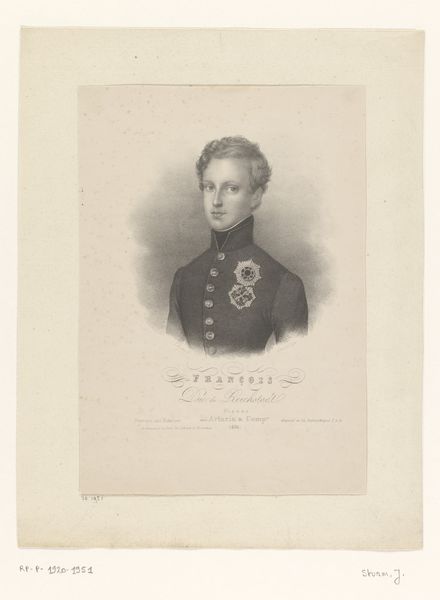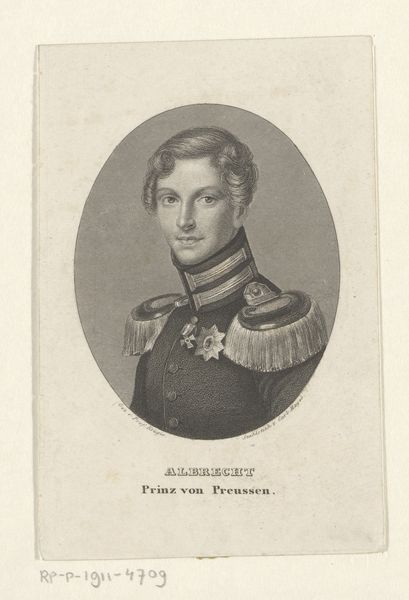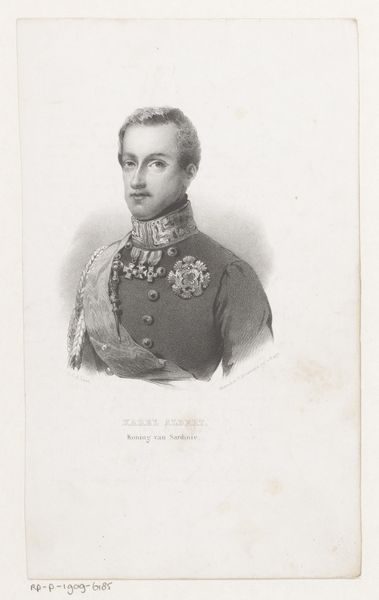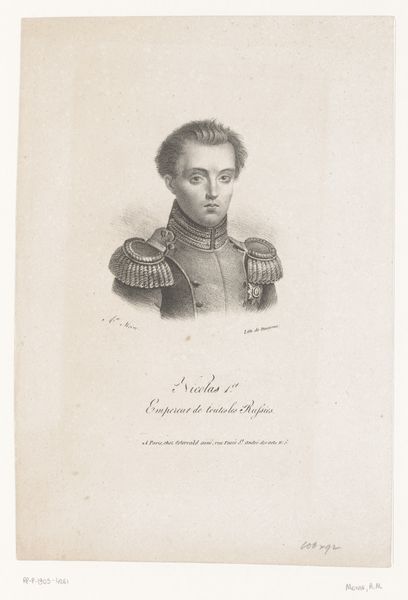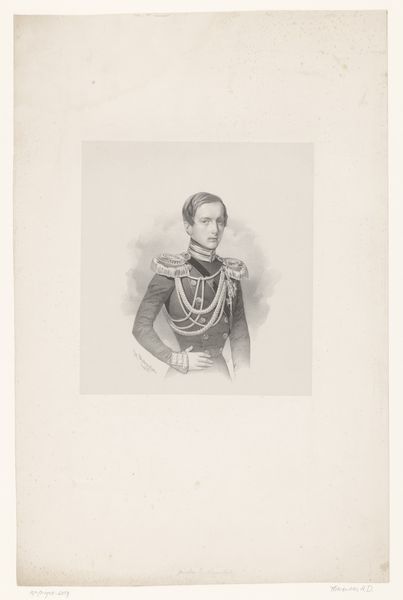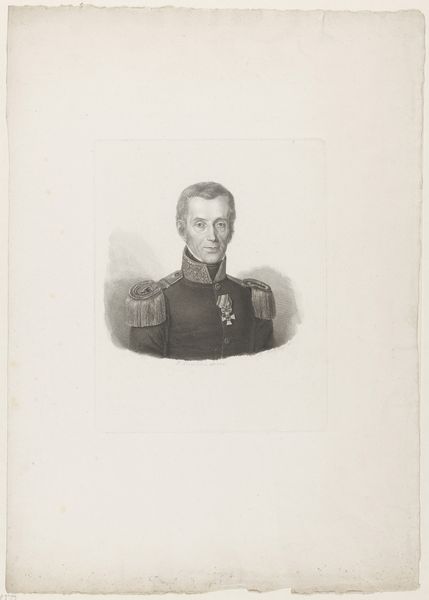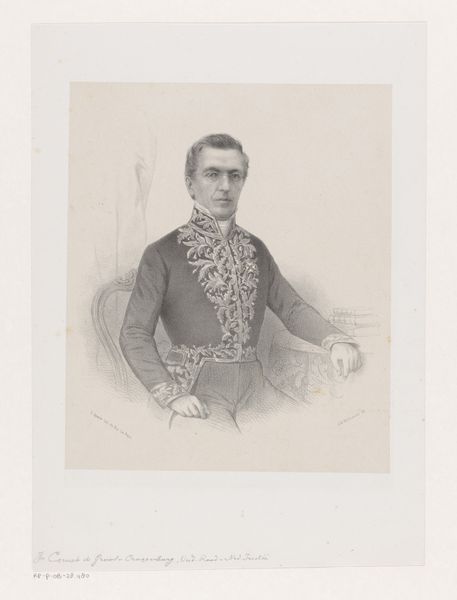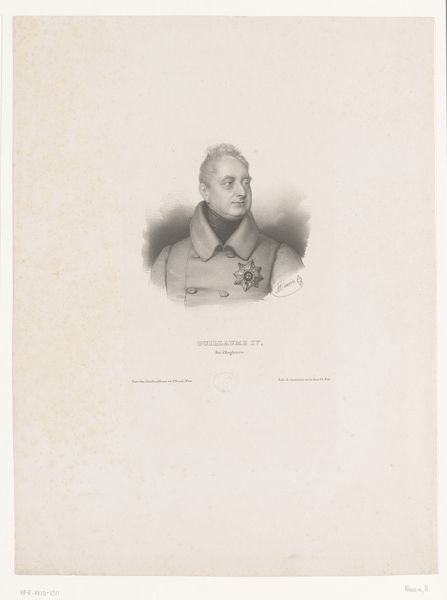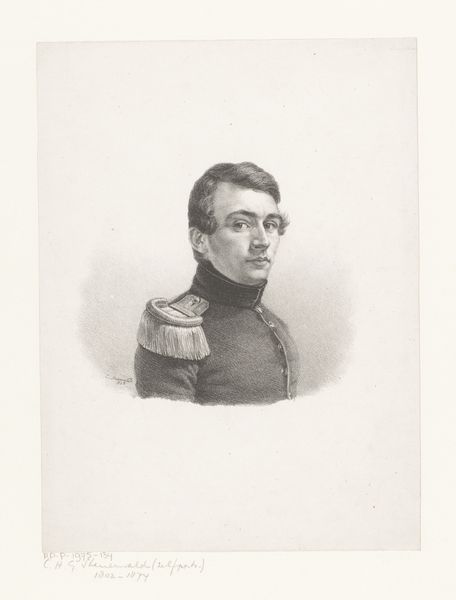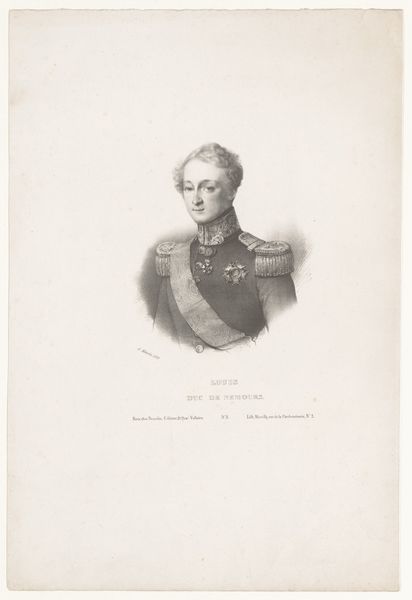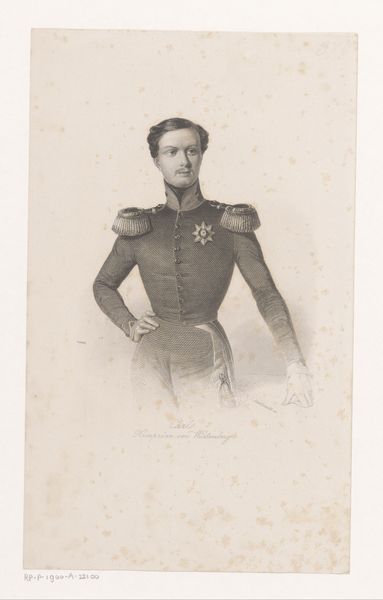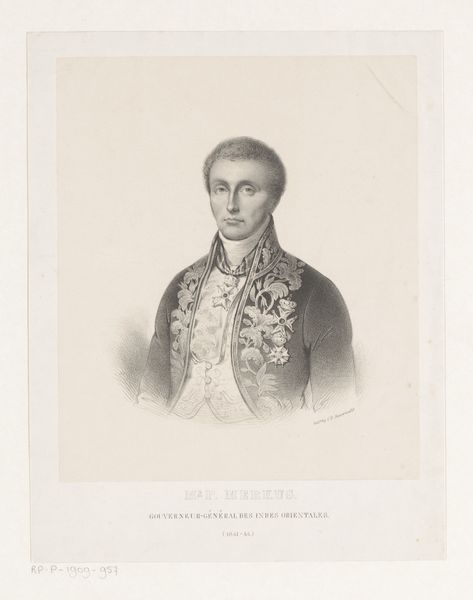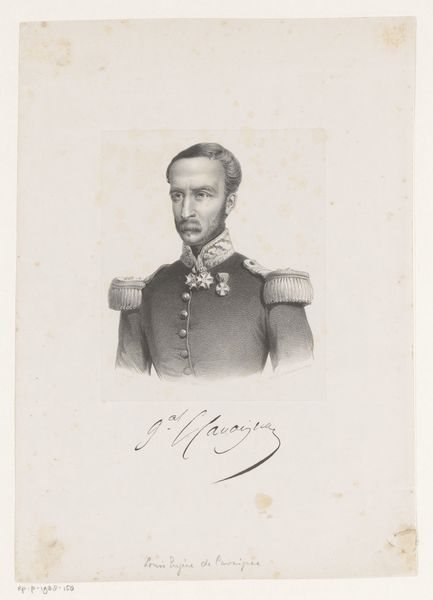
engraving
#
portrait
#
pencil drawn
#
neoclacissism
#
16_19th-century
#
pencil sketch
#
old engraving style
#
pencil work
#
history-painting
#
engraving
Dimensions: height 169 mm, width 106 mm
Copyright: Rijks Museum: Open Domain
Editor: So, here we have Franz Stöber's engraving, "Portret van Napoleon Frans Karel Jozef Bonaparte," from 1830, here at the Rijksmuseum. It feels... formal, I guess? Stiff? It has an old engraving style but it's striking nonetheless. What's your take on it? Curator: The formality is certainly intentional. Consider the Neoclassical art movement context of the time: it wasn’t just about aesthetic choices. It was a visual language of power, reinforcing hierarchical structures through controlled composition and idealized representations. This image echoes similar power statements made throughout history, with men posing and gesturing in ways that reinforced patriarchy, but what about our dear subject of this piece, and how might the piece contribute to his standing or position? Editor: That's fascinating. So the stiffness and formality is kind of an active choice that bolsters an individual's power or influence. Would that make Napoleon himself part of that structure in the painting? Curator: Precisely! But think deeper: how might Napoleon—the portrayed individual and not his father—benefit or be further entrenched into society, with those two noble orders acting as the support system. It's worth considering whether these aesthetic choices empowered some while simultaneously silencing others and upholding gender stereotypes that still impact us today. How does looking at this portrait through that lens change your interpretation? Editor: It definitely adds a layer of complexity. Seeing it as more than just a portrait, but as a piece that participates in a bigger social structure. I guess I was just seeing the surface level before. Thank you for the insights. Curator: The most compelling art often invites these types of broader conversations and reflections and creates awareness.
Comments
No comments
Be the first to comment and join the conversation on the ultimate creative platform.
